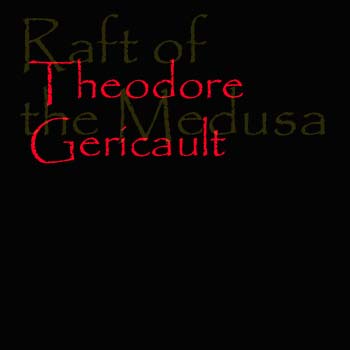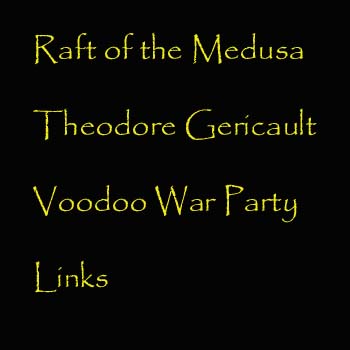|
|
|

Gericault
the Painter
THEODORE GERICAULT
(1791-1824)
Jean
Louis Andre Theodore Gericault was a French painter during the Romantic
Era. Born into a wealthy Rouen family, he was fortunate to study
under great painters such as Carle Vernet and Pierre Guerin. The
works of the Italian Renaissance painter Michelangelo and the Flemish artist
Peter Paul Rubens greatly influenced Gericaultís paintings. Some
of Gericaultís work consists of the Charging Chasseur (1812, Musee
du Louvre), Wounded Cuirassier (1814, Musee du Louvre), and the
beautiful Raft of the Medusa (1818-1819,
Musee du Louvre).
These paintings showed Gericaultís talent to portray powerful emotion,
brutal actions, bold design, and dramatic color. The
Raft of the Medusa was a symbol portraying the dying survivors
of a contemporary shipwreck, and it soulfully depicted human agony, graphic
details, and controversy over the French government. This canvas
also aroused a storm of controversy between neoclassical and romantic artists.
Among his other works, Theodore Gericaultís talent led him to create a
number of bronze statuettes, a marvelous series of lithographs, and hundreds
of drawings and color sketches.
Check
out the nifty concept map for an overview.
The Romantic Era
The Romantic Era began in the early 1800s and ended in 1850. This
era is characterized as being highly imaginative and having a subjective
approach, emotional intensity, and dreamlike qualities. In the 18th
Century, Romanticism was taken to mean ďromance like.Ē This word
began to be associated with wild scenery. In France, the word became
popular within the Napoleonic Wars that raged from 1799 to 1815.
The first painters in the Romantic Era found inspiration in contemporary
events. Many other painters emphasized their works upon human conditions
especially Theodore Gericault, who painted The Raft of the Medusa (1818-1819).
In Germany, there was a school that was built using symbolic landscape,
which was initiated, by the paintings of Phillip Otto Runge. The
greatest German Romantic painter was Caspar David Friedrich. One
of his most important paintings was The Polar Sea, which was painted in
1824.
In England, Samuel Palmer painted visionary religious feelings, which were
derived by Blake. The artist with the most radical vision was J.M.W.
Turner. He used luminous colors and bold, thick brushwork. In the
United States, there was a school founded by the inspiration drawn from
the wilderness of the northeastern United States. It was called the
Hudson River School. The first American landscapist and Romantic
painter was Washington Allston who introduced the style of the Romantics
to the United States by using poetic landscapes with subjective feeling.
His paintings were mysterious, brooding, and inspired by the bible, poetry,
and novels.
Subjectivity, imagination, strange, and dreamlike imagery have influenced
Romantic artists. The Romantics had a taste for medieval and mysterious
nature. Many painters liked colorful and painterly techniques over
linear and cool toned styles. Theodore Gericault was known for his
dramatic interpretation of a real event. One of these paintings was
called the Raft of the Medusa, which had to do with suffering of survivors
of a shipwreck. His painting deeply impressed Eugene Delacroix in
which he pursued in a painting called the Massacre at Chios. Romanticism
was very dominant during the 19th century but many painters worked outside
the main tradition.
Check out the nifty concept map for an overview.
